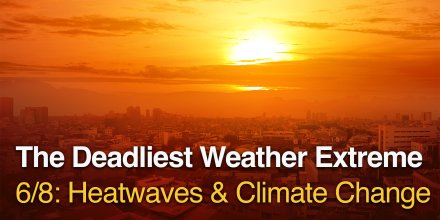
Webinar: Climate Data Tools for Resilient Urban Planning
This second webinar in the series presents digital tools that turn climate data into actionable strategies for urban resilience.

This second webinar in the series presents digital tools that turn climate data into actionable strategies for urban resilience.

Human activity drives a sharp rise in heatwaves, with some regions exceeding climate model projections.
|
|
|||||||||
|---|---|---|---|---|---|---|---|---|---|
|
Icon
|

|

|

|

|

|

|

|

|
|
|
Temperature (°F)
|
|||||||||
|
Temperature felt (°F)
|
58° |
57° |
69° |
79° |
81° |
73° |
62° |
56° |
|
|
Wind direction
|
NNW |
NNW |
WSW |
SSE |
ENE |
SW |
NNW |
NNW |
|
|
Wind speed (mph)
|
NNW
3-7
3-7
|
NNW
1-8
1-8
|
WSW
1-8
1-8
|
SSE
2-6
2-6
|
ENE
1-10
1-10
|
SW
2-11
2-11
|
NNW
2-10
2-10
|
NNW
5-11
5-11
|
|
|
Precipitation (in/3h)
|
-
5%
-
|
-
5%
-
|
-
0%
-
|
-
25%
-
|
< 0.04 in
70%
< 0.04
|
< 0.04 in
80%
< 0.04
|
< 0.04 in
45%
< 0.04
|
-
20%
-
|
|
|
Precipitation probability
|
5%
|
5%
|
0%
|
25%
|
70%
|
80%
|
45%
|
20%
|
|
|
Precipitation hourly
|
|||||||||
|
rainSPOT
Precipitation distribution within 20 km
|
|
During the night and in the first hours of the day a few clouds are expected and for this afternoon a mixture of sunshine and clouds with the possibility of local thunderstorms. It is a sunny day. Precipitation is very likely with an 80% chance. Temperatures as high as 79 °F are foreseen. Overnight into Friday blows a light breeze (4 to 8 mph). At daytime light air is noticeable (1 to 4 mph). Winds blowing overnight from North, in the morning from South and during the afternoon from Southwest. The weather forecast for 46. 67°N 10. 99°E for Friday can be accurate in parts but deviations are expected. Check again for latest updates.
Pressure: 1023 hPa
Timezone: CEST (UTC +02:00h)
The location marker is placed on 46.67°N 10.99°E. This animation shows the precipitation radar for the selected time range, as well as a 2h forecast. Orange crosses indicate lightning. Data provided by nowcast.de (available in USA, Europe, Australia). Drizzle or light snow fall might be invisible for the radar. Precipitation intensity is colour coded, ranging from turquoise to red.
The real-time satellite image combines visible light during daytime with infrared radiation during nighttime. At night, the image is not dark as infrared radiation can detect temperature differences. Unfortunately, low clouds and fog are difficult to distinguish from ground temperatures and thus can be almost invisible during the night. Meteosat satellite images for Europe are updated in real-time every 5 minutes. GOES-16/GOES-17 (North & South America) and Himawari (Asia) images update every 10 minutes.
Precipitation is estimated from radar and satellites. Precipitation estimates from satellites are less accurate at night than during daytime.
© 2025 meteoblue, NOAA Satellites GOES-16 and EUMETSAT. Lightning data provided by nowcast.

This second webinar in the series presents digital tools that turn climate data into actionable strategies for urban resilience.

Human activity drives a sharp rise in heatwaves, with some regions exceeding climate model projections.
Advertising is essential to maintain our free website with unique detail and accuracy.
Please whitelist www.meteoblue.com on your ad blocker or consider buying one of our products:
Already have a subscription?
Then please login.